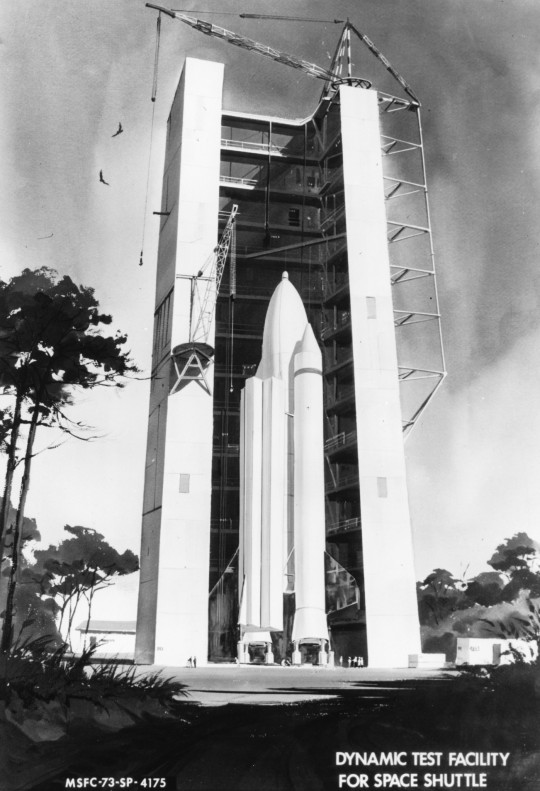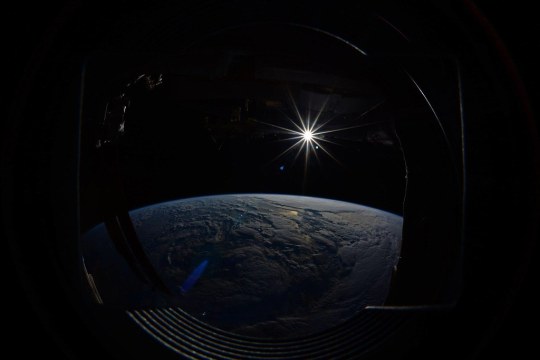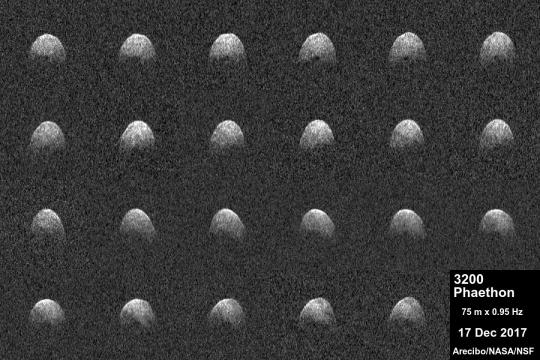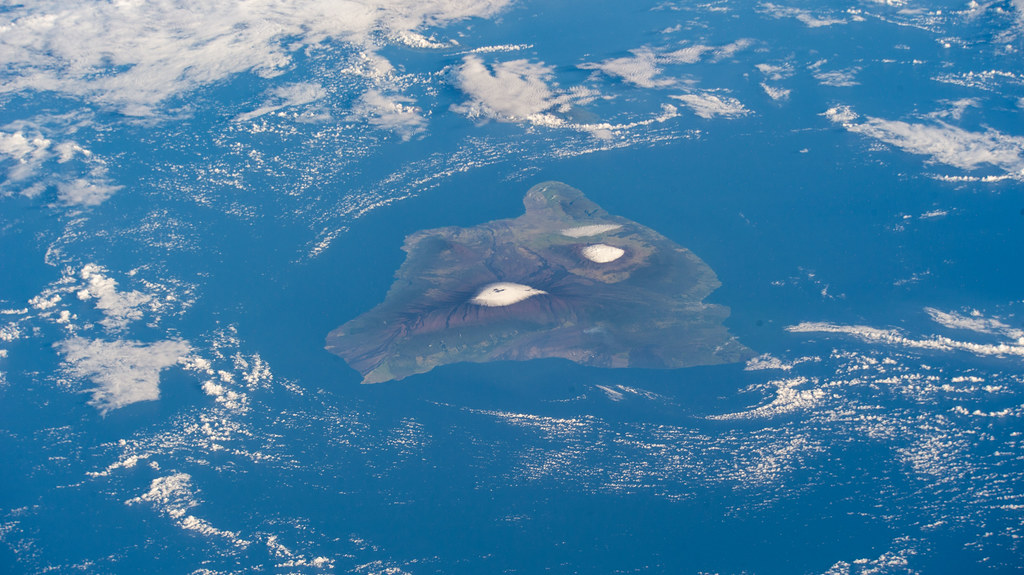#Marshall Space Flight Center
Text

Concept art of the dynamic test facility for Space Shuttle at Marshall Space Flight Center in Huntsville, Alabama.
Date: 1973
NASA ID: MSFC-73-SP-4175
#Space Shuttle#Space Shuttle Development#Concept Art#NASA#Space Transport System Program#Space Transport System#STS#Mated Vertical Ground Vibration Test#MVGVT#Marshall Space Flight Center#MSFC#Huntsville#Alabama#1973#undated#my post
22 notes
·
View notes
Video
Hubble Uncovers a Celestial Fossil by NASA's Marshall Space Flight Center
Via Flickr:
This densely populated group of stars is the globular cluster NGC 1841, which is part of the Large Magellanic Cloud (LMC), a satellite galaxy of our Milky Way galaxy that lies about 162,000 light-years away. Satellite galaxies are bound by gravity in orbits around a more massive host galaxy. We typically think of the Andromeda Galaxy as our galaxy’s nearest galactic companion, but it is more accurate to say that Andromeda is the nearest galaxy that is not in orbit around the Milky Way galaxy. In fact, dozens of satellite galaxies orbit our galaxy and they are far closer than Andromeda. The largest and brightest of these is the LMC, which is easily visible to the unaided eye from the southern hemisphere under dark sky conditions away from light pollution. The LMC is home to many globular clusters. These celestial bodies fall somewhere between open clusters – which are much less dense and tightly bound – and small, compact galaxies. Increasingly sophisticated observations reveal the stellar populations and characteristics of globular clusters are varied and complex, and we have yet to fully understand how these tightly packed groups of stars form. However, there are certain consistencies across all globular clusters: they are very stable and hold their shape for a long time, which means they are generally very old and contain large numbers of very old stars. Globular clusters are akin to celestial ‘fossils.’ Just as fossils provide insight into the early development of life on Earth, globular clusters such as NGC 1841 can provide insights into very early star formation in galaxies. Credit: ESA/Hubble & NASA, A. Sarajedini #NASA #NASAGoddard #NASAMarshall #NASAGoddard #HubbleSpaceTelescope #HST #ESA #globularcluster Read more Read more about NASA’s Hubble Space Telescope NASA Media Usage Guidelines
#NASA#Goddard Space Flight Center#GSFC#Solar System & Beyond#ESA#European Space Agency#universe#space#astronomy#Marshall Space Flight Center#MSFC#Hubble Space Telescope#HST#Hubble#globular cluster#NGC 1841#star cluster#globular star cluster#stars#Watch
20 notes
·
View notes
Text
What's next for NASA's Artemis program?
The Artemis 1 Space Launch System (SLS) rocket at Kennedy Space Center’s (KSC) Launch Pad 39B, on the morning of March 18, 2022. Credit: Scott Johnson / Spaceflight Insider
KENNEDY SPACE CENTER, Fla. — Late last year, NASA successfully launched its first Space Launch System rocket, propelling an uncrewed Orion capsule on a flight to a distant retrograde orbit around the Moon. That was Artemis…

View On WordPress
#Artemis 2#Artemis 3#Artemis program#Human Space Flight#Kennedy Space Center#Marshall Space Flight Center#NASA#Orion#Space Launch System#SpaceX#The Range#United Launch Alliance
3 notes
·
View notes
Video
The Big Island of Hawaii by NASA's Marshall Space Flight Center
Via Flickr:
The big island of Hawaii and its two snow-capped volcanos, (from left) the active Mauna Loa and the dormant Mauna Kea, are pictured from the International Space Station as it orbited 260 miles above the Pacific Ocean. Image Credit: NASA #NASA #NASAMarshall #ISS #InternationalSpaceStation Read more More about the International Space Station NASA Media Usage Guidelines
2 notes
·
View notes
Video
Stellar Snowflake Cluster by NASA's Marshall Space Flight Center
Via Flickr:
From all of us here at Marshall Space Flight Center, we wish you a healthy and happy holiday season! Celebrate with a stellar snowflake that sits within the cosmic Christmas Tree Cluster! Image Credit: NASA/JPL-Caltech/CfA #NASA #NASAMarshall #JPL #JetPropulsionLaboratory #SpitzerSpaceTelescope #Spitzer #ChristmasTreeCluster Read more More about NASA's Spitzer Space Telescope More about NASA's Wide-field Infrared Survey Explorer NASA Media Usage Guidelines
#NASA#Marshall Space Flight Center#MSFC#JPL#Jet Propulsion Laboratory#Spitzer Space Telescope#Christmas Tree cluster#flickr
3 notes
·
View notes
Link
X-ray: (Chandra) NASA/CXC/U. Manitoba/C. Treyturik, (XMM-Newton) ESA/C. Treyturik; Optical: (Pan-STA...
0 notes
Video
Making Waves in Open Science: NASA Initiatives Enable Ocean Research by NASA's Marshall Space Flight Center
Via ƒ lick R kalegiro inefect ne0nthc 6VCR
As NASA works to make data and research more meaningful and accessible to diverse public and scientific audiences, the agency’s Transform to Open Science (TOPS) program is supporting open science efforts and programs across a variety of scientific disciplines, including climate science and physical oceanography. By leveraging open science principles, NASA encourages and empowers scientists to address critical issues such as melting polar sea ice, rising sea levels, and the overall health of marine ecosystems. The goal of open science is to make NASA research and data more collaborative, accessible, inclusive, and transparent for everyone from the scientist and student to the city manager and citizen. As part of the Open Source Science Initiative, the TOPS team is committed to providing space for everyone in the scientific community to learn about the variety of open science tools and data available, as well as the importance of open science itself. Among the communities that have embraced open science is a NASA-funded consortium called Estimating the Circulation and Climate of the Ocean (ECCO). For more than 20 years, ECCO has been producing models of ocean variables such as sea surface height, sea surface temperature, global mean sea level, sea ice concentration, and ocean bottom pressure. For example, tidal currents often exhibit laminar flow characteristics, visible in the upper left and right corners of the image. This scene was collected by NASA’s Landsat 8 satellite on September 24, 2021. Image Credit: NASA #NASAMarshall #TOPS #TransformtoOpenScience #OpenScience #ocean #landsat Read more NASA Media Usage Guidelines
0 notes
Video
NASA’s Juno Exploring Jovian Moons During Extended Mission by NASA's Marshall Space Flight Center
Via Flickr:
After revealing a trove of details about the moons Ganymede and Europa, the mission to Jupiter is setting its sights on sister moon Io. NASA’s Juno mission is scheduled to obtain images of the Jovian moon Io on Dec. 15 as part of its continuing exploration of Jupiter’s inner moons. Now in the second year of its extended mission to investigate the interior of Jupiter, the solar-powered spacecraft performed a close flyby of Ganymede in 2021 and of Europa earlier this year. In this image, the volcano-laced surface of Jupiter’s moon Io was captured in infrared by the Juno spacecraft’s Jovian Infrared Auroral Mapper (JIRAM) imager as it flew by at a distance of was about 50,000 miles (80,000 kilometers) on July 5, 2022. Brighter spots indicate higher temperatures in this image. Image credit: NASA/JPL-Caltech/SwRI/ASI/INAF/JIRAM #NASA #MarshallSpaceFlightCenter #MSFC #Marshall #jpl #jetpropulsionlaboratory #nasamarshall #juno #nasajuno #Io Read more More about Juno NASA Media Usage Guidelines
#NASA#Marshall Space Flight Center#MSFC#Jet Propulsion Laboratory#JPL#Solar system and beyond#Juno#Jupiter#Space#planets#Io#flickr
1 note
·
View note
Photo

The Sun from the Internation Space Station by NASA's Marshall Space Flight Center https://flic.kr/p/XBafoT
141 notes
·
View notes
Text
Site-Wide Environmental Assessment for Marshall Space Flight Center Alabama
The National Aeronautics and Space Administration (NASA) has prepared a Draft Environmental Assessment (EA) that analyzes the environmental impacts of implementing continuing and future mission support activities at the Marshall Space Flight Center (MSFC) in Huntsville, Alabama. The EA evaluated the potential environmental effects associated with air quality; climate change and greenhouse gases; land use; […]
from NASA https://ift.tt/UM8FZuO
#NASA#space#Site-Wide Environmental Assessment for Marshall Space Flight Center#Alabama#Michael Gabrill
0 notes
Text

NASA’s Webb Snaps Supersonic Outflow of Young Star by NASA's Marshall Space Flight Center
2K notes
·
View notes
Text

"This photograph shows F-1 engines being stored in the F-1 Engine Preparation Shop, building 4666, at the Marshall Space Flight Center. Each F-1 engine produced a thrust of 1,500,000 pounds. A cluster of five engines was mounted on the thrust structure of the S-IC stage of a 364-foot long Saturn V launch vehicle that ultimately took astronauts to the Moon."
Date: March 1965
NASA ID: 6521185
#Rocketdyne F-1#F-1#Rocket Engine#NASA#Apollo Program#Marshall Space Flight Center#MSFC#Huntsville#Alabama#March#1965#my post
105 notes
·
View notes
Video
NASA Finds Moon of Saturn Has Chemical That Could Form ‘Membranes’ par NASA's Marshall Space Flight Center
Via Flickr :
NASA scientists have definitively detected the chemical acrylonitrile in the atmosphere of Saturn’s moon Titan, a place that has long intrigued scientists investigating the chemical precursors of life. On Earth, acrylonitrile, also known as vinyl cyanide, is useful in the manufacture of plastics. Under the harsh conditions of Saturn’s largest moon, this chemical is thought to be capable of forming stable, flexible structures similar to cell membranes. Other researchers have previously suggested that acrylonitrile is an ingredient of Titan’s atmosphere, but they did not report an unambiguous detection of the chemical in the smorgasbord of organic, or carbon-rich, molecules found there. Now, NASA researchers have identified the chemical fingerprint of acrylonitrile in Titan data collected by the Atacama Large Millimeter/submillimeter Array (ALMA) in Chile. The team found large quantities of the chemical on Titan, most likely in the stratosphere — the hazy part of the atmosphere that gives this moon its brownish-orange color. Image credit: NASA/JPL/Space Science Institute Read more NASA Media Usage Guidelines
#NASA#NASA's#Marshall#Space#Flight#Center#Cassini#JPL#Jet#Propulsion#Laboratory#Solar#System#Beyond#Saturn#Titan#flickr
0 notes
Video
Cays of the Bahamas by NASA's Marshall Space Flight Center
Via Flickr:
(From left) Culmer's Cay, Glass Cay, Tommy Young's Cay, Davy Cay, Hog Cay, and Green Turtle Cay—islands off the mainland Great Abaco in the Bahamas— appear like jigsaw puzzle pieces as the bright teals and blues of the Atlantic Ocean flow and swirl between the land. The International Space Station orbited 259 miles above as this photograph was taken. Image Credit: NASA #NASA #NASAMarshall #ISS #InternationalSpaceStation #Earth #bahamas Read more More about the International Space Station NASA Media Usage Guidelines
1 note
·
View note
Text

A Geminid meteor streaks across the sky as the Soyuz TMA-19M spacecraft is rolled out by train to the launch pad at the Baikonur Cosmodrome on Sunday, Dec. 13, 2015, in Kazakhstan. Credit: NASA/Joel Kowsky
Make a Wish! How to See the Geminid Meteor Shower
Every December, we have a chance to see one of our favorite meteor showers – the Geminids. To help you prepare, we’ve answered some of your most commonly asked questions. Happy viewing, stargazers!

These radar images of near-Earth object 3200 Phaethon were generated by astronomers at the National Science Foundation's Arecibo Observatory on Dec. 17, 2017. Observations of Phaethon were conducted at Arecibo from Dec. 15 through 19, 2017. At time of closest approach on Dec. 16 at 3 p.m. PST (6 p.m. EST, 2300 UTC), the asteroid was about 6.4 million miles (10.3 million kilometers) away, or about 27 times the distance from Earth to the Moon. Credit: Arecibo Observatory/NASA/NSF
What are the Geminids?
The Geminids are caused by debris from a celestial object known as 3200 Phaethon striking Earth’s atmosphere. Phaethon’s origin is the subject of some debate. Some astronomers consider it to be an extinct comet, based on observations showing some small amount of material leaving its surface. Others argue that it has to be an asteroid because of its orbit and its similarity to the main-belt asteroid Pallas.

All meteors appear to come from the same place in the sky, which is called the radiant. The Geminids appear to radiate from a point in the constellation Gemini, hence the name “Geminids.” The graphic shows the radiants of 388 meteors with speeds of 35 km/s observed by the NASA Fireball Network in December 2020. All the radiants are in Gemini, which means they belong to the Geminid shower. Credit: NASA
Why are they called the Geminids?
All meteors associated with a shower have similar orbits, and they all appear to come from the same place in the sky, which is called the radiant. The Geminids appear to radiate from a point in the constellation Gemini, hence the name “Geminids.”

A Geminid streaks across the sky in this photo from December 2019. Credit: NASA
When is the best time to view them?
The Geminid meteor shower is active for much of December, but the peak will occur during the night of Dec. 13 into the morning of Dec. 14, 2023. Meteor rates in rural areas can be upwards of one per minute this year with minimal moonlight to interfere.
youtube
What do I need to see them?
As with all meteor showers, all you need is a clear sky, darkness, a bit of patience, and perhaps warm outerwear and blankets for this one. You don’t need to look in any particular direction, as meteors can generally be seen all over the sky. If you want to take photographs, check out these helpful tips.

An infographic based on 2019’s meteor camera data for the Geminids. Credit: NASA
Do you have any advice to help me see the Geminids better?
Find the darkest place you can and give your eyes about 30 minutes to adapt to the dark. Avoid looking at your cell phone, as it will disrupt your night vision. Lie flat on your back and look straight up, taking in as much sky as possible.

A Geminid streaks across the sky in this photo from December 2011. Credit: NASA
What will the meteors look like?
According to Bill Cooke, lead for the Meteoroid Environment Office at NASA’s Marshall Space Flight Center in Huntsville, Alabama, “Most meteors appear to be colorless or white, however the Geminids appear with a greenish hue. They’re pretty meteors!” Depending on the meteor’s chemical composition, the meteor will emit different colors when burned in the Earth’s atmosphere. Oxygen, magnesium, and nickel usually produce green.
Make sure to follow us on Tumblr for your regular dose of space!
#NASA#space#meteors#meteor showers#Geminids#asteroids#comets#science#sky#night#astronomy#astrophotography#YouTube
1K notes
·
View notes
Link
X-ray: (Chandra) NASA/CXC/U. Manitoba/C. Treyturik, (XMM-Newton) ESA/C. Treyturik; Optical: (Pan-STA...
0 notes



